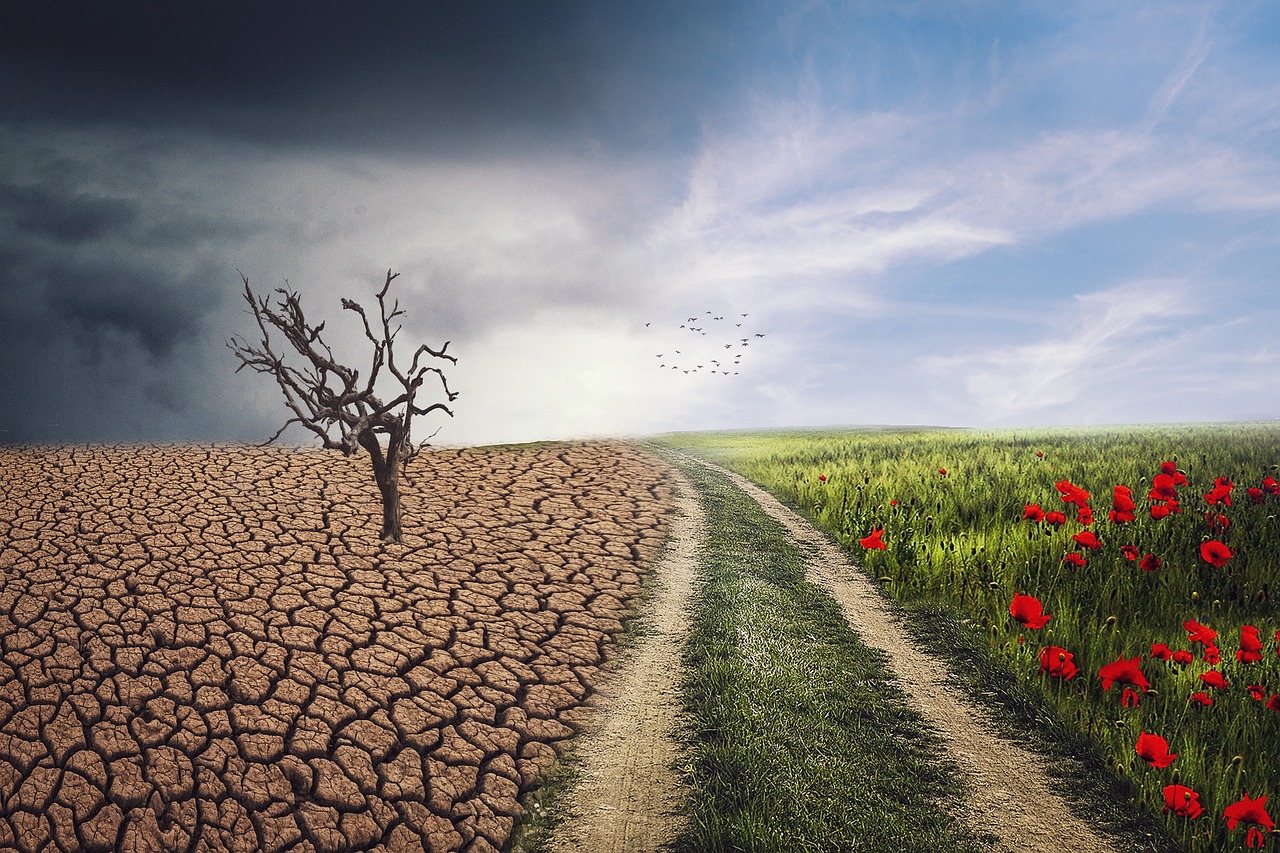Since the beginning of the industrial age, the globe’s average temperature has increased by 1.1 degrees C, and there is no indication that the upward trend will change in the upcoming years. In 2015, in Paris, the international community managed to reach a historic climate agreement that aimed to halt the rise in the Earth’s average temperature at 1.5 degrees C, or at worst, below 2 degrees C. [1] Eight years after the Paris summit, one can say with certainty that the ambitious goals of the signatory countries have not been met, as evidenced by the fact that since 2015, the Keeling curve measuring atmospheric carbon dioxide concentrations (particles per million) has risen from 402 ppm to 420 ppm, meaning that an average of 2.25 ppm has been added annually for the past eight years. By comparison, when the Earth was emerging from the Ice Age, CO2 concentrations rose by less than 100 ppm over 10,000 years, from about 180 to 270 ppm – increasing at a rate of less than 1 ppm per century.
Many scientists around the world, due to the pessimistic predictions for the future, have begun to look for alternative solutions to protect our planet from disaster, among which climate geoengineering has gained the most popularity.


Climate geoengineering – what is it about?
Climate geoengineering is in simplest terms the idea of cooling the Earth’s climate by manipulating its atmosphere or oceans. Planetary-scale climate engineering technologies generally fall into two groups: (Carbon Dioxide Removal, CDR), which is the removal of carbon dioxide from the atmosphere, and (Solar Radiation Management, SRM), which is the reduction of the amount of energy reaching the Earth’s surface from the sun.
Among the most discussed ideas in climate geoengineering in recent years is definitely the spraying of sulfate aerosols in the stratosphere to reflect sunlight. The pioneer of this solution is Professor David Keith of Harvard University, who was recently appointed by U.S. President Joe Biden to head a cross-sector group of scientists preparing climate policy recommendations for the U.S. government. The U.S. scientist says that by spraying sulfur dioxide in the stratosphere in a controlled manner, an effect similar to that produced by volcanic eruptions can be achieved. Hence the spraying of sulfur aerosols into the atmosphere is often referred to by publicists as Operation Pinatubo – after the volcano in the Philippines whose 1991 eruption lowered the global average temperature by half a degree. [2] Human interference with the climate, however, has its consequences. Opponents of this solution point out that increasing the amount of sulfates in the atmosphere could lead to serious disruptions in atmospheric circulation, resulting in significant changes in the monsoon cycle or even its complete disappearance. In addition, they point out that sulfur aerosols are harmful to the ozone layer and scatter the sun’s rays by brightening the sky, and long-term maintenance of their effects would require constant, regular, and consistent spraying of these gases in the stratosphere. In the event that this operation was to be abandoned after a few years of continuing, the temperature on Earth would very quickly rise to levels much higher than before the spraying of aerosols. [3]
Scientists: using this kind of climate intervention is like a situation when the cure is worse than the disease
For the reasons mentioned above, a large number of respected scientists believe that using this kind of climate intervention to save the planet from global warming is like a situation when the cure is worse than the disease. However, opinions remain divided. Most countries, following in the footsteps of the United States, are creating their climate intervention programs. Interestingly, international law does not regulate climate geoengineering in any way, so it could happen in the near future if some eccentric billionaire or authoritarian dictator decides to introduce such solutions without consulting other decision-makers. This could set the stage for future climate conflicts, which would erupt with much greater intensity than at present. It should therefore be crucial for the international community to develop regulations in this area as soon as possible to prevent such dangers.
In the context of the Polish market, attention should be drawn to the fact that decisions made regarding global warming and climate protection directly impact Poland’s economic and social sectors. As an integral part of the global system, Poland is not isolated from the effects of climate changes undertaken on the international stage.
From Poland’s perspective, this entire debate might appear insignificant, but it is crucial to remember that actions taken by other countries will indirectly affect our nation. Planet Earth is a common good for all its inhabitants, and the resources available to humanity are limited; human interference in the climate is nearing critical levels. Therefore, taking a clear stance on this issue before it’s too late would be advisable.
Bibliography:
[1] “Geoinżynieria uratuje Ziemię? Ten szalony pomysł mocno skłócił badaczy klimatu” – Andrzej Hołdys, 22.04.2023 r., Polityka, URL:
[2] “Kto się bawi w Boga? Zaczął się wielki, groźny wyścig po techno-zbawienie” – Patrycja Sasnal, 25.06.2023 r., Polityka, URL: https://www.polityka.pl/tygodnikpolityka/nauka/2216354,1,kto-sie-bawi-w-boga-zaczal-sie-wielki-grozny-wyscig-po-techno-zbawienie.read
[3] “Nauka o klimacie” – s. 16-36; 377-389 – Marcin Popkiewicz, Aleksandra Kardaś, Szymon Malinowski, WYDAWNICTWO SONIA DRAGA Sp. Z o.o., Warszawa 2019.
Grafiki
[5] https://keelingcurve.ucsd.edu
Maksymilian Mirecki


